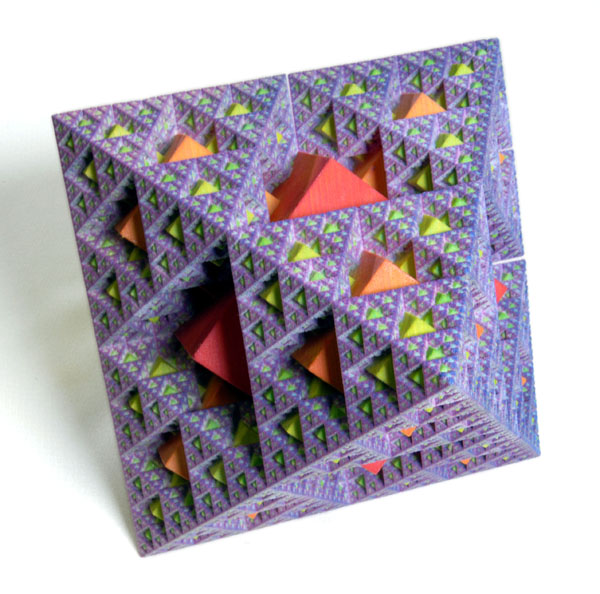Robert Fathauer
Small business owner, puzzle designer and artist, Tessellations CompanyRobert Fathauer makes limited-edition prints inspired by tiling, fractals, and knots. He employs mathematics in his art to express his fascination with certain aspects of our world, such as symmetry, complexity, chaos, and infinity. His artworks are created on a Macintosh computer, primarily using the commercial programs FreeHand and Photoshop. He discovered the arrangement of cubes in "Fractal Crystal No. 1" in 1999, but didn't have the ability to fabricate a 3-dimensional model at that time.
Nicholas Duchnowski
Graduate Student, Beckman Institute, University of Illinois at Urbana-ChampaignNicholas Duchnowski's interests include mathematics, computer programming, and art. He created the vrml description of "Fractal Crystal No. 1" that was used to fabricate the sculpture.
Hank Kaczmarski
Computer Scientist, Beckman Institute, University of Illinois at Urbana-ChampaignHank Kaczmarski is the Director of the Virtual Reality Lab at the Beckman Institute. His interests include the creation of interactive multimedia art with mathematics content and the staging of exhibitions that incorporate such installations.
“Fractal Crystal No. 1 ”
2007, Sculpture created using a zCorp color 3-D printer, 8" x 8" x 8"
"Fractal Crystal No. 1" is constructed by starting with a first generation cube and placing a half-scale cube on the center of each face. The second-generation cubes have the same orientation as the first-generation cube. Third-generation cubes again scaled by half are placed on each unoccupied face of a second-generation cube. This process is continued ad infinitum to form a "fractal crystal". The growth of the crystal occurs more rapidly along normals to the faces of the starting cube, leading to an overall envelope that is the Archimedean dual of the cube. The sculpture includes the first 11 generations of cubes, with colors graduated from red for the largest cube to blue for the smallest cubes.